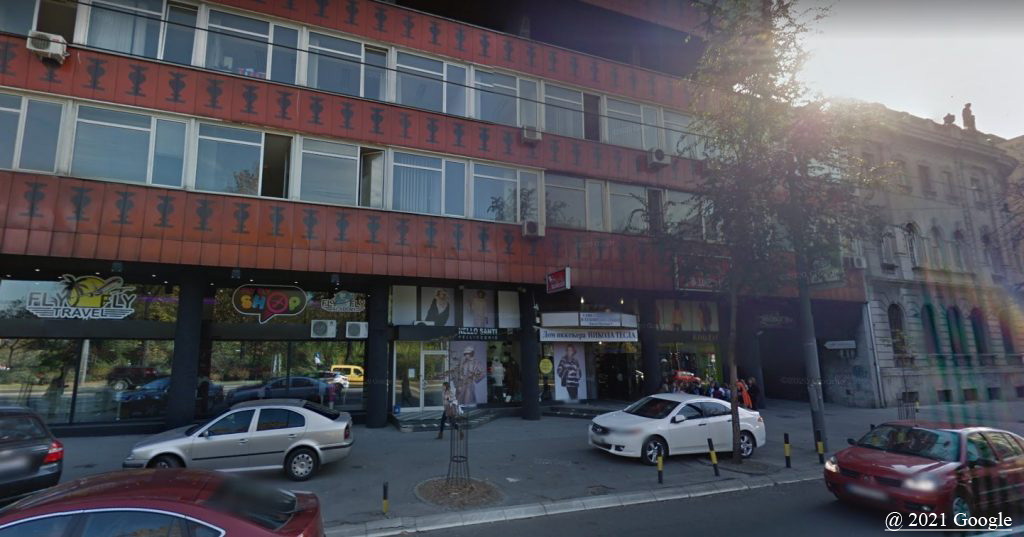
The Society for Electronics, Telecommunications, Computing, Automatics and Nuclear engineering (ETRAN) of Serbia is registered as a volontary, non-partisan, non-governmental, non-profit organization of experts in the field of electrical engineering and connected fields.
The Society is the lawful successor of the Yugoslav Association for Electronics, Telecommunications, Automatics and Nuclear engineering (ETAN) originated in June, 1953.
The ETRAN Society Secretariat is located in Belgrade 11000, Kneza Miloša 9, IV floor.
The goals of the ETRAN are:
- Promotion of creative work in the fields of electronics, telecommunications, computers, automation, nuclear engineering and connected fields
- Planning and implementation of scientific and expert development in pertinent fields
- Advancement of modern technologies and their application
- Organization of cooperation among universities, research organizations and industry connected with planning the industrial development and higher education
- Work in the fields of projects, standards and technical norms
- Organization of domestic and international science and expert meetings, exhibitions and debates in the pertinent fields
- Technical preparation and publishing of proceedings, journals and other publications in pertinent fields
- Cooperation with similar societies in the country, with similar national societies in other countries and with international societies pertinent to activities of ETRAN
The activities of ETRAN proceed within the framework of the following expert sections:
Electronics
Development of electronic circuits; modeling of electronic systems; simulation and design of electronic circuits and systems; development of electronic methods and measurement systems; acquisition and processing of measurement data; virtual instrumentation; power electronics; supply systems.
Telecommunications
Radio-systems; telecommunication and computer networks; digital telecommunications; information theory and coding; commucation systems
Computer Science
Architecture of computer systems; software techniques and tools; information systems; operating systems; program languages and translators; database structures; security and data protection; local computer networks; microcomputers and VLSI technique; computerized process control; computer vision and image processing; computer simulation; multimedia.
Automation
Multivariable systems for plants and industrial process control; computerized control systems; modeling and simulation of dynamic systems; stochastic systems; estimation and adaptive control
Nuclear Engineering
Nuclear engineering and neutron physics; reactor physics; physics and technique of power nuclear reactors; safety of nuclear power plants
Acoustics
Physical acoustics; sound generation and acoustic wave propagation; ultrasound; hydroacousticsl seismic waves; bioacoustics; physiological and psychological acoustics; speech analysis, synthesis and processing; speech communications; room acoustics; protection against noise and vibrations; acoustics in civil engineering; musical acoustics; processing of acoustic signals; electroacoustic transducers; audio equipment and systems.
Antennas and propagation
Electrostatics; electromagnetic fields; antennas; ionosphere and propagation
Biomedical technique
Biophysics; biosignal processing; biomedical instrumentation
Artificial Intelligence
Theoretical and practical aspects; codification and representation of knowledge, inteligent user interfaces, mechanisms of decision making, machine learning, heuristic searches and systems for solution of traditional difficult problems; pattern recognition systems – analysis and synthesis, neural networks; architectures, training alorithms and evaluation; hybrid systems.
Power Engineering
Systems for production, transport and distribution of electrical energy; planning, control and protection of power engineering systems; information technologies in power engineering; electrical machines, power transducers and electromotive drives; electrothermy; equipment, measurement and measuring transducers.
Electrical curcuits, electrical systems and signal processing
General theoryof electric circuits and systems; analog and digital filters; digital signal processing; systems and algorithms for digital image processing; analysis and synthesis of electric circuits, design and implementation of electrical circuits; symbolic analysis of circuits using computers; artifitial neural networks.
Metrology
Implementation of basic and derived units of the SI system; legislation in metrology, standards, methods for ethalon callibration and comparation; statistical processing of measurement results and estimation of measurement inaccuracy; absolute mesurements of electrical and non-electrical values; the development of domestic metrology system.
Microelectronics and Optoelectronics
Physical electronics; semiconductor and microsystem technologies; modeling and simulation; design; measurement and characterization; quality and reliability; discrete components; integrated circuits; sensors and actuators; optical and optoelectronic devices; intelligent components.
Microwave and submillimeter wave technique
Waveguiding systems; antennas, modeling, simulation and design of accessories and systems; satelite and cable TV; radiodiffusion systems; fast Internet; measurements in radiofrequent, microwave, milimeter and optical range
New materials
General phenomena; oxide and non-oxide ceramics; thin film structures; fullerenes; carbon-based materials; composites; powder metallurgy; physical metallurgy.
Robotics and flexible automation
Robot kinematics and dynamics; robot control; development of robots and robotized systems; development and control of flexible production systems.


